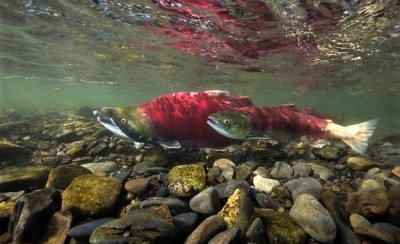Fisheries Preservation


The Wildlife and Marine Resources Section is primarily responsible for defending court challenges to the federal management of fisheries in U.S. coastal waters. These fisheries include valuable stocks such as flounder, perch, swordfish, and salmon, that are sought for harvest by a wide range of commercial and recreational fishery participants located in States and local communities on the nation’s coasts.
In 1976, Congress established by statute an Exclusive Economic Zone, from 3-200 miles seaward of the United States’ shores. The primary purpose of this legislation, later re-named the Magnuson-Stevens Fishery Conservation and Management Act (“Magnuson Act”), was to reduce foreign exploitation of fisheries close to the nation’s shores and to encourage the development of a domestic fishing industry. To achieve this goal, Congress established a system of regional fishery management councils (“Councils”) comprised of stakeholders in the fisheries. These Councils prepare fishery management plans and plan amendments and recommend management actions that are subject to review, approval, and implementation by the National Marine Fisheries Service (“NMFS”), an agency within the National Oceanic and Atmospheric Administration of the U.S. Department of Commerce. As the domestic fishing industry supplanted foreign fishing and fishing pressure increased, much of the Councils’ and NMFS’s attention turned to finding ways to fairly allocate the amount of fishing that may sustainably occur in a given fishery over time and thereby avoid overfishing that ultimately harms all fishery participants.
Under the Magnuson Act, certain NMFS actions with respect to federal fisheries are subject to judicial challenge. As a result, the Section has defended over the years NMFS’s approval of numerous Council management plans and measures dealing with a wide range of fishery management issues such as:
- what annual level of catch will allow for the maximum sustainable yield from a fishery over time, and when fishing should be halted or reduced to address overfishing of a stock;
- whether and how to count past participation in a fishery when setting fishing quotas;
- how to allocate fish between highly efficient ocean-going catcher/processor fishing vessels and smaller, shore-based vessels and recreational vessels;
- how to appropriately effectuate Indian treaty rights to fish;
- whether particular short-term changes in fishery management could be accomplished without notice and comment procedures; and
- the extent to which on-board monitoring systems and imposition of the cost of these and other monitoring requirements are within the Magnuson Act’s authority.


The Section’s work in this area also concerns the interaction between fishing in federal waters and species protected under the Endangered Species Act (“ESA”) and the Marine Mammal Protection Act (“MMPA”). One common issue is how best to manage “bycatch” or incidental catch of these species or non-targeted fish species in fishing operations. Sea turtles, and other large marine animals, are vulnerable to incidental harm from commercial fishing operations. To help sea turtles, NMFS has developed and required the use of Turtle Excluder Devices (TEDs) to allow them to escape from the bottom of a net while smaller species, like shrimp, are harvested. In a number of cases, the Section has successfully defended NMFS’s decisions regarding the appropriate equipment or fishery management measures necessary to reduce bycatch or other harm to ESA-listed and/or MMPA-protected species.

 U.S. Department
of Justice
U.S. Department
of Justice